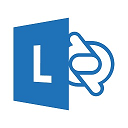October 2012 Updates Released for Lync Server 2010
The Lync team has released the October 2012 updates for Lync Server 2010 and related products. Here are some of the details:
2493736 Updates for Lync Server 2010
Highlights
- 2735313 No notification of an incoming file transfer when you minimize a Lync 2010 conversation window
- 2735319 A user name that is included in a Lync Online meeting URL is incorrect when delegate is configured
- 2735321Â “Block all” setting of the global file transfer filter does not work in Lync Server 2010
- 2735323Â A call to an UCMA 3.0 endpoint is disconnected after 30 minutes
KBs
Lync Server 2010
- 2670358 Description of the cumulative update for Lync Server 2010, Administrative Tools: February 2012
- 2740403 Description of the cumulative update for Lync Server 2010, Core Components: October 2012
- 2701659 Description of the cumulative update for Lync Server 2010, Conferencing Attendant: June 2012
- 2514978 Description of the cumulative update for Lync Server 2010, Conferencing Server: November 2011
- 2737902 Description of the cumulative update for Lync Server 2010, Web Components Server: October 2012
- 2737915 Description of the cumulative update for Lync Server 2010: October 2012
- 2708616 Description of the cumulative update for Lync Server 2010, Web Conferencing Server: June 2012
- 2640253 Description of the cumulative update for Lync Server 2010, Mediation Server: November 2011
- 2740406 Description of the cumulative update for Lync Server 2010, Unified Communications Managed API 3.0 Runtime: October 2012
- 2650037 Description of the update for Lync Server 2010 Bandwidth Policy Service: December 2011
- 2743736 Description of the cumulative update for Lync Server 2010, Mobility Service: October 2012
Use the cumulative update installer, called LyncServerUpdateInstaller.exe to view and install the needed updates. That update can be downloaded here.
Clients
- 2737155 Cumulative Updates for Lync 2010
- 2752160 Cumulative Updates for Lync 2010 Attendee – Administrator level installation
- 2752157 Cumulative Updates for Lync 2010 Attendee – User level installation
Phone Edition
No updates listed
For information on updating Lync Phone Edition devices, see Jeff Schertz’s article Updating Lync Phone Edition Devices, as well as my script New-CsFirmware.ps1
Group Chat
No updates listed
Installation
Note: Pay close attention to the installation notes listed on the summary page. They include manual tasks that must be followed after installing the updates on Lync servers.








Follow Me